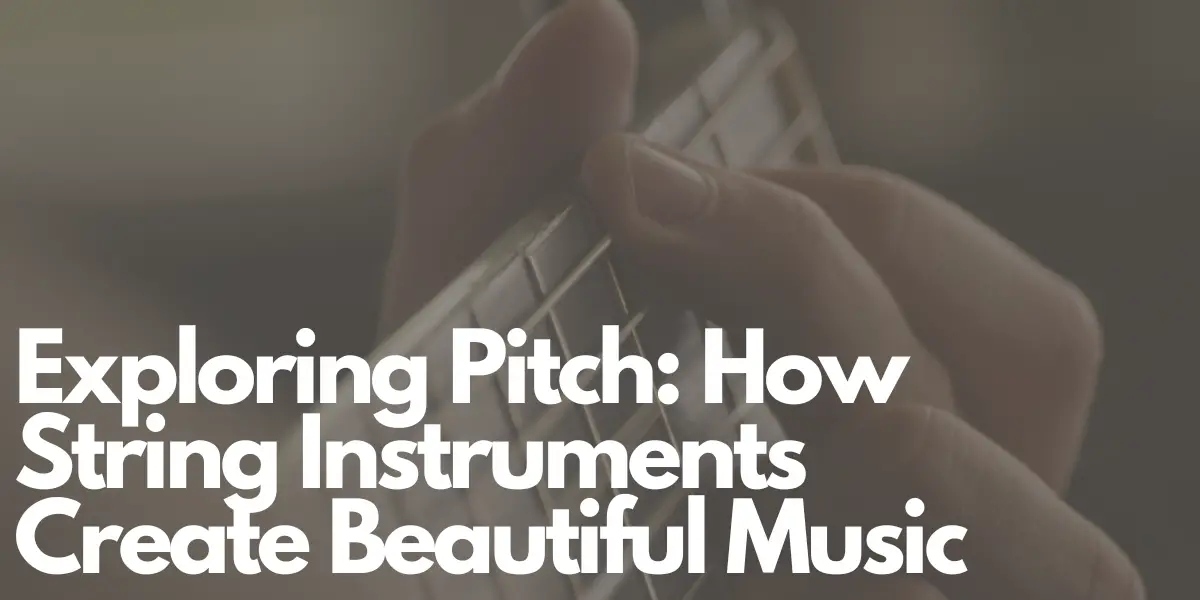Stringed instruments have always held a special place in the world of music. Whether it’s the soothing melodies of a violin, the intricate chords of a guitar, or the grandeur of a piano, these instruments captivate our hearts with their harmonious tunes. But have you ever wondered how string instruments manage to change their pitch and produce such a diverse range of sounds? In this article, we’ll dive deep into the mechanics of how stringed instruments modify their pitch to create the beautiful music we all love.
The Basics: Tension and Length
At the core of pitch manipulation in string instruments lie two fundamental factors: tension and length. These two elements work in harmony to produce the desired notes.
Tension: String tension is like the secret sauce that determines pitch. By tightening or loosening the string, musicians can create higher or lower pitches, respectively. Tuning pegs or machine heads are the go-to tools for adjusting tension.
Length: The effective length of the vibrating portion of the string is equally crucial. Shortening the length raises the pitch, while lengthening lowers it. Musicians achieve this by pressing strings against frets or altering finger positions along the fingerboard.
Changing Pitch on Different String Instruments
Different string instruments employ distinct mechanisms to modify tension and length, giving birth to a spectrum of sounds:
Guitars: Guitars are renowned for their versatility. Tuning pegs, situated at the headstock, offer control over tension. Players further manipulate pitch by pressing strings against frets or varying finger positions on the fretboard. Each open string is tuned to a specific pitch.
Violins, Violas, and Cellos: In these instruments, precision is key. Musicians turn pegs to adjust tension while using their fingers on the fingerboard to alter vibrating length and produce different pitches.
Pianos: Pianos introduce a unique twist with multiple strings per note, resulting in a rich, complex sound. Tuning occurs through the adjustment of tension in each string for a specific key using tuning pins. Pianists, on the other hand, create various pitches by pressing keys, causing hammers to strike the strings.
Harps: Harps showcase an intricate system of pedals that engage or disengage specific mechanisms, altering string length. This innovation allows harpists to effortlessly switch between sharps and flats within a musical piece.
Double Basses: Similar to their violin family counterparts, double bass players use tuning pegs to modify tension. By stopping the strings with their fingers and placing their hands at different points on the fingerboard, they can achieve a wide range of pitches.
Fretted vs. Fretless Instruments
An interesting divide exists between fretted and fretless instruments:
Fretted Instruments: Guitars and bass guitars fall into this category, featuring fixed frets on the fingerboard. Players can change pitch by pressing strings against different frets, providing them with a structured guide.
Fretless Instruments: Violins, cellos, and double basses, on the other hand, are fretless. Musicians here rely solely on the precision of their finger placement to create the desired pitch, allowing for a more fluid and expressive playing style.
Conclusion
The mesmerizing ability of stringed instruments to change pitch is a true testament to the delicate balance between string tension and the effective vibrating length of the string. By skillfully adjusting these two variables through tuning pegs, frets, or finger positioning, musicians unlock a world of musical possibilities. It’s a remarkable fusion of physics and artistry that makes string instruments such powerful tools for conveying emotions and creating the enchanting melodies we cherish. So, next time you listen to the sweet strains of a violin or the soulful chords of a guitar, remember the science behind the magic, and let yourself be transported into the world of musical expression.
Author: Mike P
Hi! My name is Mike! I’ve been an apartment producer/musician for 10+ years. I’ve played in punk bands, released EDM tunes on Beatport and iTunes, and have a semi-successful stock music portfolio. Read more…


